By Jailson Lima (Chemistry Department, Vanier College, Montreal, QC)
I have been teaching chemistry to science students at Vanier College both in pre-university and career programs for the past 17 years. Since 2009, I have also taught History and Methodology of Science, a mandatory, fourth-semester course that is part of Vanier’s Liberal Arts program. From the very start, it was evident that the approaches that I had used with science cohorts were not well suited to Liberal Arts students due to their insufficient backgrounds from high school and generalized lack of interest in the subject. Most of these students have phobias for mathematical formulas and calculations and do not see the purpose of having a science course as part of their program. Finding ways to spark students’ curiosity and imagination in this course became my main challenge, an analogous situation that I encountered at the beginning of my career while trying to reach out to disengaged high school students in Brazil.
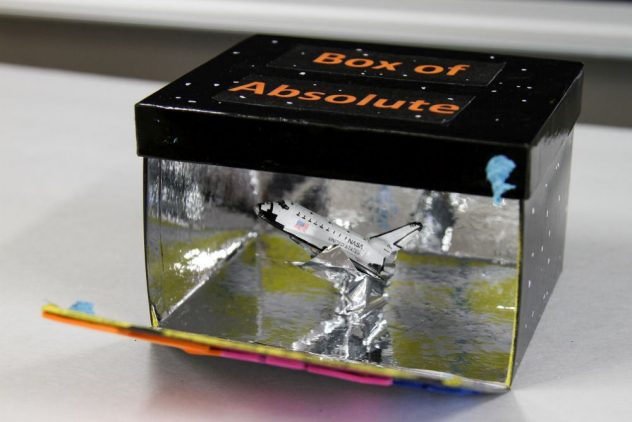
The Loss Of Objective Reality
Connecting Art & Science
Following the ideas of Imaginative Education, I searched for alternatives to engage Liberal Arts students by creating a narrative that linked their previous knowledge in philosophy, history, and art with the content of the science course. Believing that images can engage humans in ways that words and numbers cannot, I decided to merge art and science within a historical perspective.
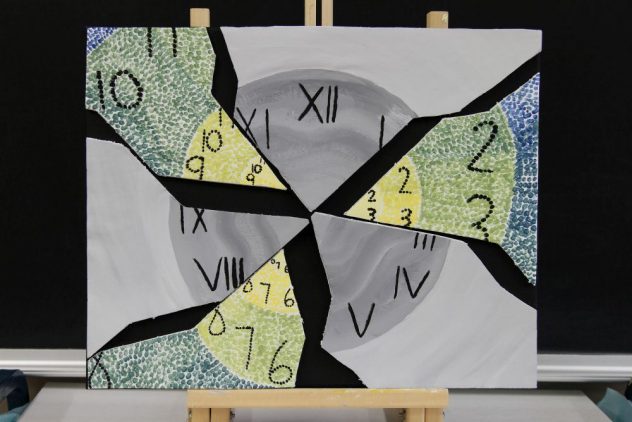
Clash Of Cosmologies
I designed a course that compares the evolution of visual arts and the contemporary changes in scientific paradigms since the beginning of the modern era. After studying the subject, I identified underlying patterns to connect arts and science. For example, from the Renaissance to the late 19th century, the generalized belief that scientific knowledge described physical reality legitimized the supremacy of Newtonian cosmology. During the same period, artworks utilized a realistic approach to depict an objective world consisting of well-defined and recognizable figures in three-dimensional space. The depiction of the world as objective reality changed abruptly in both art and science at the beginning of the 20th century with the development of Impressionism and Quantum Theory. Emphasizing the similarities between the paradigm changes in both scientific concepts and artistic forms of expression became the centerpiece of my upgraded Liberal Arts science course. Using narrative, images, and humanization of meaning, I was able to imaginatively and emotionally engage my students in the History and Methodology of Science course.
Obsessed With Light: Monet Meets Einstein
Up until mid-19th century, the prevalent idea was that painting should either faithfully represent reality or present an idealization of reality (Shlain, 1991; Szamosi, 1986). This view went hand in hand with the conceptual framework of Newtonian mechanics. At the dawn of the 20th century, two individuals—one artist and one scientist—revolutionize their respective domains by recognizing the fundamental role of the transitory character of human perception in the construction of reality. In addition to their remarkable imaginations, Claude Monet and Albert Einstein also shared their obsessive interest in understanding and exploring the properties of light.
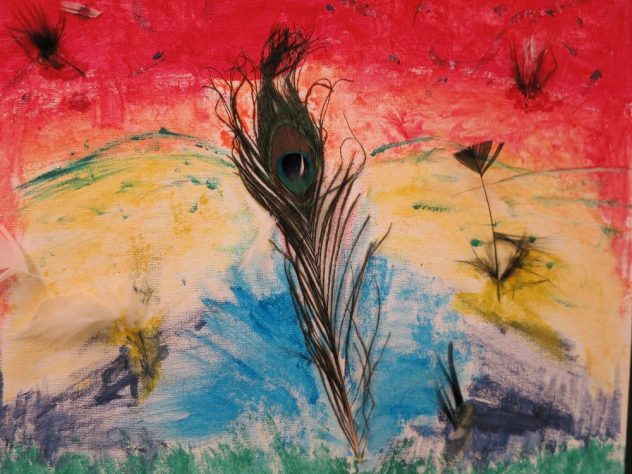
Light Spectrum
My students analyzed Monet’s paintings in which the representation of the world no longer consists of well-defined and recognizable figures in three-dimensional space. Instead of focusing on the geometry of shapes, Monet eliminates the outlines and boundaries so that objects are no longer clear-cut and solid. Monet tries to capture on canvas the very act of perceiving nature by showing how light changes our visual experience. He was the first artist to immerse the viewer in the delight of color for color’s sake by painting the same theme under different weather conditions and light exposures. No two paintings of even the same subject look alike (Leibowitz, 2008).
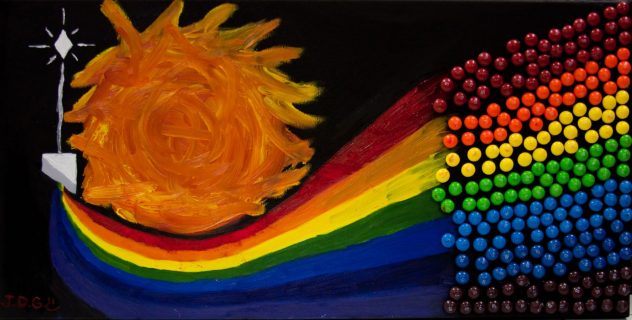
Wave Particle Duality
The timing of this changing perception in art coincided with a revolution in science that challenged the objectivity of classical Newtonian mechanics (Greene, 2004; Gamow, 1966). Like Monet, Einstein was obsessed with the nature of light. In 1905, he explained the photoelectric effect by proposing that light can behave as both waves and particles. The wave-particle duality of light—a behavior also observed with matter later—became one of the ground-breaking concepts in quantum theory. At the atomic level, Classical Newtonian mechanics does not apply and is unable to predict the behaviour of matter and the unexpected experimental results (Gardner, 1993; Isaacson, 2007).
The revolution in Monet’s art was in step with the development of modern physics’ radical change of worldview at the same time. We do not know what light is, only how it behaves: as a wave in some experiments and as a particle in others (Falk, 2002). The limitations of human perception trump the desire to describe the world objectively by emphasizing the construction of reality rather than its discovery (Hofstadter, 1999). A true revolution had started.
This Is Not A Pipe: Magritte Meets Einstein
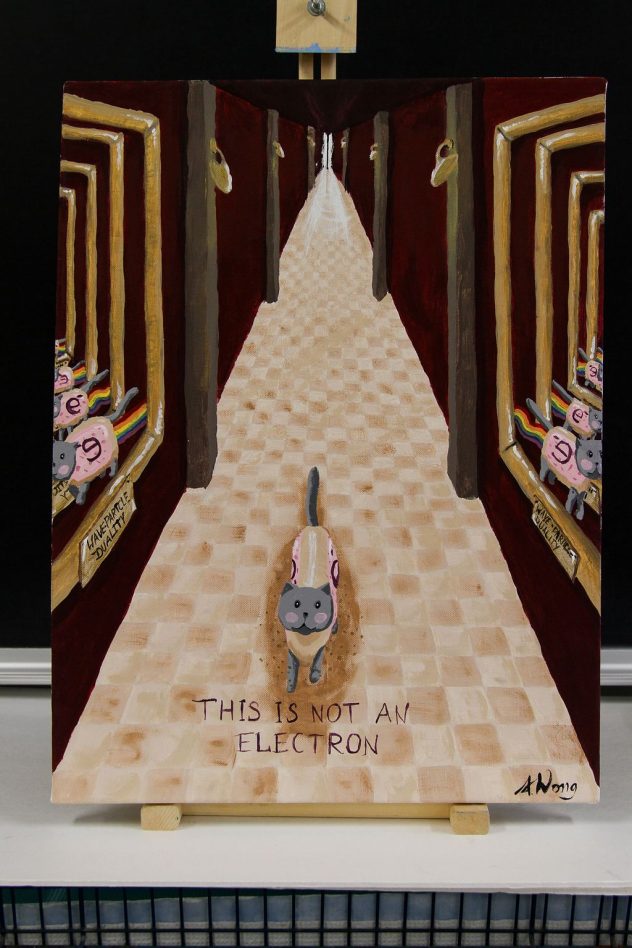
This Is Not An Electron
The works of the Belgian painter René Magritte are used in this course as illustrations of the notion of symbolic representation (Umland, 2013). Magritte’s paintings frequently portray juxtaposed ordinary objects in unconventional, unexpected contexts that lead viewers to new interpretations that are somewhat disruptive to consider. His iconic masterpiece The Treachery of Images (1929) depicts a pipe with the disclaimer “This is not a pipe,” which emphasizes the distinction between objects and their representations (Sylvester, 2009). In the The Human Condition (1934), the painting within the painting perfectly captures the scene behind it, which is paradoxical because the image can never equal reality (Meuris, 2004). Students are invited to associate these paintings with scientific concepts. For example, all atomic models that we study throughout the course are only representations of aspects of an atom and neither the atom itself nor its true nature. It might look obvious to an expert but this realization helps students understand the high level of abstraction of chemical models and gives them an appreciation for the images, symbols, and conventions used in the field.
Deconstructing Reality: Picasso Meets Einstein
In my History and Methodology of Science course I also establish links between the ground-breaking works of Sigmund Freud, Pablo Picasso, and Albert Einstein in the early 20th century. Published in 1900, Freud’s The Interpretation of Dreams describes the crucial role of the unconscious in determining human behaviour by placing emotions and sensations as more important than rational thought (Panek, 2004). In 1905, Einstein published a series of revolutionary papers including one about the photoelectric effect and another about the Special Theory of Relativity. These papers revolutionized core scientific paradigms from Classic Newtonian Physics by reconceptualising the basic notions of time, space, matter, light, and energy. During the same period, Picasso began experimenting with deconstructing physical forms to portray the world away from classical, realistic descriptions by not attempting to represent reality faithfully or to idealize it. This innovative approach resulted in his 1907 creative breakthrough Les Demoiselles d’Avignon, which is one of the most important paintings of the 20th century (Miller, 2001).
By analyzing the works of these extraordinary individuals, students began to get hold of the Zeitgeist—the spirit of the time—present at the dawn of the 20th century and to understand that neither art nor science evolve in isolation, but they are rather umbilically connected as part of the collective human mindset and experience.
Science and art would never be the same after these revolutions changed our view of reality (Kandel, 2012). It is crucial for science students to understand that scientific knowledge is not absolute, but it is instead based on mental models that have intrinsic limitations to their applicability.
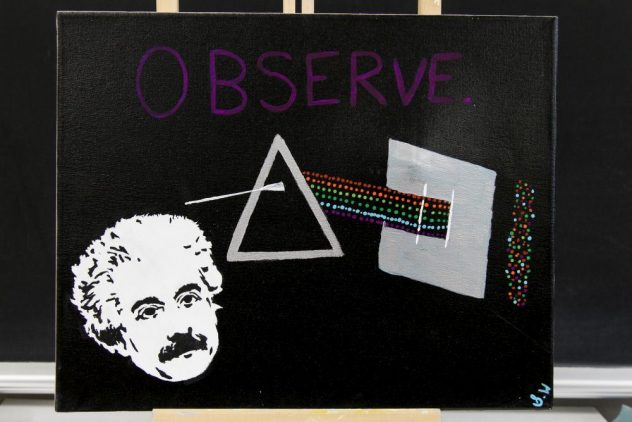
Quantum & Perception
The newly established connections made in the course between science and the visual arts intrigued my Liberal Arts students. They started seeing science differently—through tools of the philosophic imagination—as part of a complex web that links aspects of art and philosophy to the political and economic realities of a given historical period. This new framework validated for them the need for a science course in the program. Now they think that acquiring basic science literacy is paramount in our times.
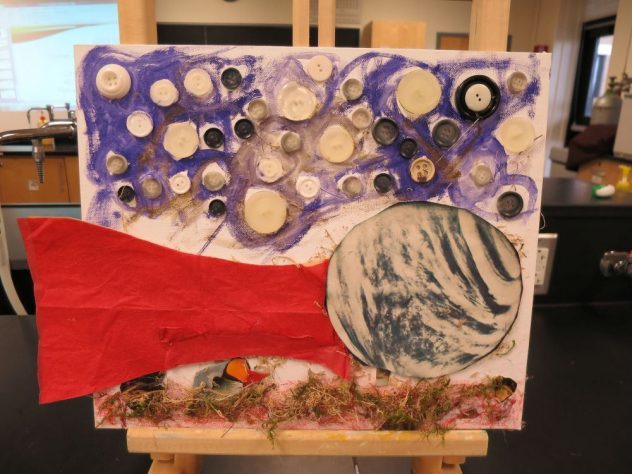
Zeitgeist
Creative Assessments: Exploring Science Through Art
Fostering imagination and creativity requires time and proper incentives. By employing cognitive tools, I found it possible to engage my students emotionally and imaginatively with the subject matter in my course. I have found that exposing students to imaginative works in multiple forms facilitates the development of strong emotional connections with the topic.
For example, students enjoyed reading the play Picasso at the Lapin Agile by Steve Martin (1996), which uses humor to portray a fictitious encounter between Einstein and Picasso in Paris in 1904, prior to their creative breakthroughs. To emphasize scientific concepts through images, students played with the interactive simulations Photoelectric Effect and Models for the Hydrogen Atom created by the University of Colorado, Boulder, and available through their website. The simulations activate their brains to think in terms of pictures and images rather than only with the words and numbers that are the focus of traditional approaches.
After the presentation of the course material, I created an art-lab assignment where I asked students to create visual representations that they associate with the idea of uncertainty and the clash between Classical Newtonian cosmology and the counterintuitive nature of quantum mechanics.
Finally, the Art &Science Project is a big assignment at the end of the course where students are required to both create a visual representation that portrays core scientific ideas and write a rationale for its process of creation and links to the course content. (This project has been described in detail here.)
This longer-term, iterative creative project requires both imagination and the ability to integrate concepts. The students’ creative process is as important as the final product. When compared to traditional instructional strategies—the pervasive lecture/drill/practice—used in science courses, this activity embodies a remarkable shift in philosophy of teaching, curriculum design, and pedagogy. Students assume a more active role in their learning process by constructing meaning through high-level cognitive activities. There is also an incentive to think creatively and imaginatively, both not common characteristics of traditional approaches to teaching science. Incorporating art in the science curriculum has enormous potential to spark students’ interest in both fields. The time has come to embrace imagination and creativity at all levels of instruction.
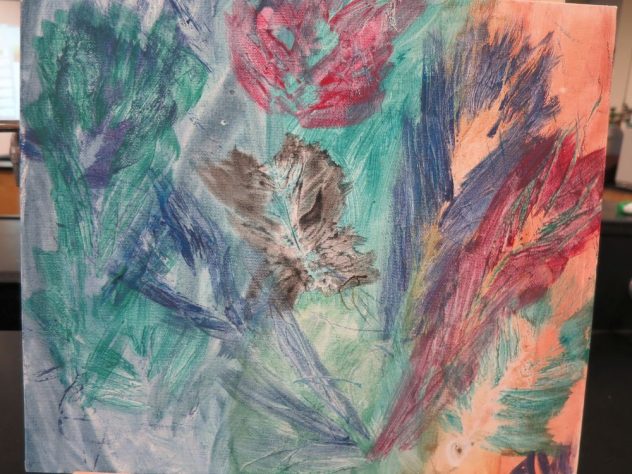
Impressions
I would like to acknowledge the invaluable contributions of Anna Timm-Bottos, Laura Huddart, and Janis Timm-Bottos of the Department of Creative Arts Therapies, Concordia University, Montreal.
NOTE: This article has been reprinted with permission from the Journal of Teaching and Learning. https://ojs.uwindsor.ca/ojs/leddy/index.php/JTL/article/view/5063/pdf)
Resources & Further Reading
Falk, D. (2002). Universe on a T-shirt: The quest for the theory of everything. Toronto, Ontario: Viking Canada.
Gamow, G. (1966). Thirty years that shook physics: The story of quantum theory. New York: Dover Publications, Inc.
Gardner, H. (1993). Creating minds: An anatomy of creativity seen through the lives of Freud, Einstein, Picasso, Stravinsky, Eliot, Graham, and Gandhi. New York: Basic Books.
Greene, B. (2004). The fabric of the cosmos: Space, time, and the texture of reality. New York: A. A. Knopf.
Hofstadter, D. R. (1999). Gödel, Escher, Bach: An eternal golden braid. New York: Basic Books.
Isaacson, W. (2007). Einstein: His life and universe. New York: Simon & Schuster.
Kandel, E. R. (2012). The age of insight: The quest to understand the unconsciuos in art, mind, and brain. New York: Random House.
Leibowitz, J. R. (2008). Hidden harmony: The connected worlds of physics and art. Baltimore, MD: The Johns Hopkins University Press.
Martin, S. (1996). Picasso at the Lapin Agile and other plays. New York: Grove Press.
Meuris, J. (2004). René Magritte: 1898-1967. Los Angeles: Taschen.
Miller, A. I. (2001). Einstein, Picasso: Space, time, and the beauty that causes havoc. New York: Basic Books.
Panek, R. (2004). The invisible century: Einstein, Freud, and the search for hidden universes. New York: Viking.
Ritchie, M. (2008). Into the bleed: Einstein and 21st-century art. In Einstein for the 21st century: His legacy in science, art, and modern culture (pp. 150-160). Princeton, NJ: Princeton University Press.
Shlain, L. (1991). Art & physics: Parallel visions in space, time & light. New York: Perennial.
Sylvester, D. (2009). Magritte. Antwerp: Mercatorfonds.
Szamosi, G. (1986). The twin dimensions: Inventing time & space. New York: McGraw-Hill.
Umland, A. (Ed.). (2013). Magritte: The mystery of the ordinary. New York: The Museum of Modern Art.
SaveSave
SaveSave
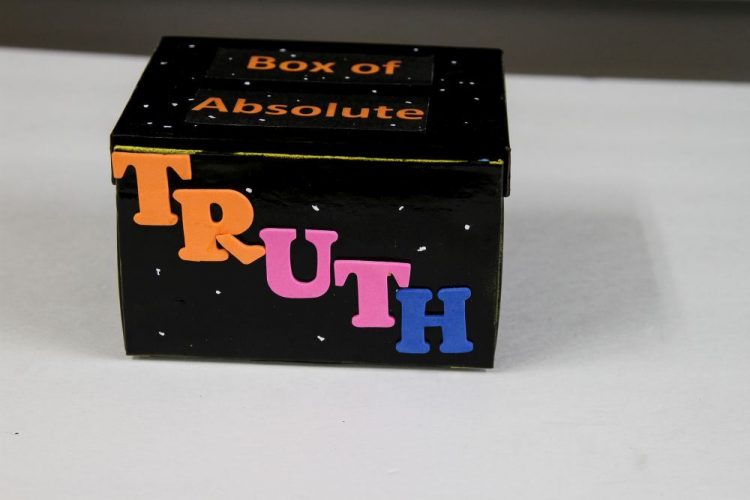
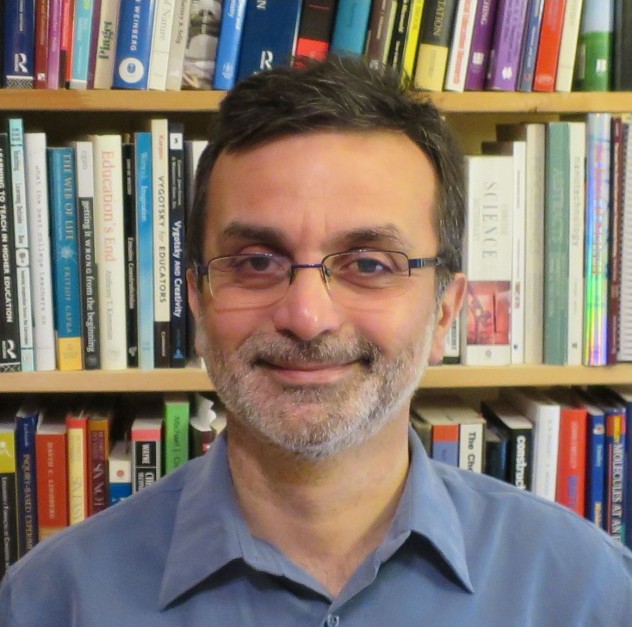
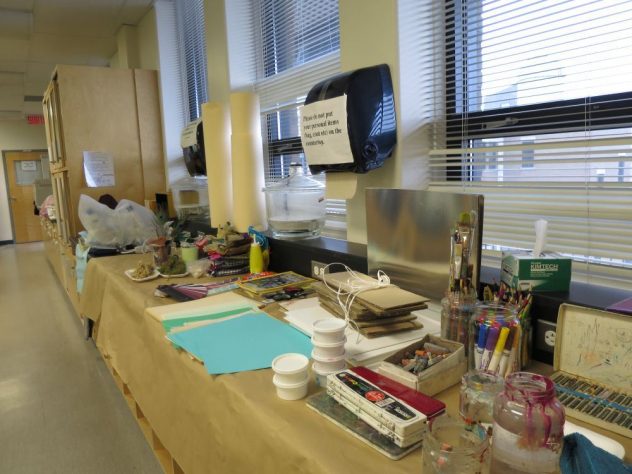

When I saw this post, a tweeted that you and I must be educational twins. The fusing of the arts and the sciences has been a driving force of my Curiculum for the past 23 or so years. Thank you for the post and I wish you and your students continuous success.
Hi Taoufik,
Thanks for your comment.
I am glad to find out that there are teachers like you who have been exploring this approach for such a long time. I truly believe that the joy of learning is found along the journey rather than at the destination. It is remarkable to experience the variety of creative processes by which students engage their imaginations. Witnessing the overwhelming power of student creativity is for me the most enjoyable experience as a teacher.
I have just found ImaginED, IE and your blog post. Thank you so much for sharing it. I home educate my children in Ireland and we just started a ‘science club’ with another family. We have age range 7-11 years old. We started last week, looking at atoms (the children’s request) and our discussion was all around ‘models’ of atoms – Bohr, Schroedinger and our own lego bricks model, only being representations and limited (each with their own merits and problems). Even my 7 year old got it, especially the lego model being a bit like but also not really like an atom! I’m going to follow this up now by looking for specific links in art as we continue – which all the children love. If you have any ideas for younger students, do share! Thanks for the inspiration.
Hi Nav,
Chemical bonding and molecular shapes are indeed fundamental concepts in chemistry. It is great to introduce these ideas to students in their initial stages of schooling.
Although Lego bricks are good tools to start with, they have intrinsic limitations, as you already mentioned. I would suggest that you work with a Molecular Model Kit. They are quite inexpensive and available through major online distributors such as Amazon. With such a kit, you can emphasize the idea of molecular geometry. For example, water has a V-shape (also called bent or angular). It is interesting to underline that regardless of its physical state, a water molecule keeps the same shape. It is a common misconception among high-school students that when water evaporates, it becomes oxygen gas and hydrogen gas.
To show the difference in molecular shape, it is interesting to compare water with carbon dioxide: both molecules have three atoms, but water’s geometry is bent, whereas that of carbon dioxide is linear. You can also emphasize the difference between single bonds (hydrogen gas), double bonds (oxygen gas) and triple bonds (nitrogen gas).
I would finalize this unit by showing the shape of methane: tetrahedral. The molecule is totally symmetrical with a bond angle of 109.5 degrees. I still remember how fascinated I was when introduced to this shape, which is one of the Platonic solids.
Let me know if I can be of any help.
Jailson
Thanks so much for your reply Jailson. I used lego bricks as an introduction model only – to demonstrate atoms as “building blocks” of molecules and compounds and the notion of sharing atoms (the bumps!) – thought even the youngest would hopefully relate to that. We made a water molecule using oranges and grapes held at the correct angles with toothpicks (and then ate them!). The next session we were going to make models of O2, CO2 and CH4 with pipe cleaners and coloured modelling clay – to compare numbers of bonds and shape. I’m heartened to find I’m on the right track with all this from your post suggestions! I’ll add making N3 too now.
I’m looking into getting a molecular model kit as you suggest. For the next session after that I planned to look at how molecule shape matters in more detail by having fun with tasting limonene and then explore the allotropes of carbon.
There seem to be great ways to use the mythic cognitive tools of IE – some throughout the topic, such as telling the story of the universe as if it is writing a letter to the children, making particles and atoms along the way, giving the elements personalities – narratising and personalising – and some in individual sessions such as binary oppositions (e.g. taste of limonene enantomers, diamond – hard and graphite – soft). I’m enjoying the planning.
Thanks again for your thoughts and suggestions – do share any others that come to mind. They are so helpful.
(Onbehalf of Jailson–blog trouble!)
Hi Nav,
Limonene is a nice illustration of the crucial role of molecular structure. According to my students, the properties of enantiomers is one of the most ground-breaking concepts they learn in introductory chemistry courses. By the way, limonene is included in the 3-minute video that we recently created for the Montreal Museum of Fine Arts. Here is a link:
https://educart.ca/en/theme/choose-tomorrow/#/cegep-vanier-eng/cartel
Exploring the allotropes of carbon is another terrific idea of yours. I would suggest that you include the C60 Buckminsterfullerene and the single-walled carbon nanotubes. These exquisite structures always fascinate my students. If you are interested, Cochranes of Oxford (http://www.cochranes.co.uk/) has great molecular model kits for both fullerenes and nanotubes.
For the last ten years, I have been advocating the advantages of teaching chemistry using its big ideas. Big ideas are the core concepts of a discipline and the most important takeaways from a course. They need to be uncovered to help students construct their knowledge more effectively as well as to equip them to transfer that knowledge to real-life situations. This short article from Peter Atkins outlines the nine big ideas in chemistry:
https://eic.rsc.org/feature/skeletal-chemistry/2020224.article
The first five ideas can be easily explored in high school. If properly mastered, these core concepts have the potential to enhance learning and spark students’ curiosity and interest in science.
Jailson
Thanks so much Jailson. I have 10 or so “big ideas of science” (Wyn Harlen 2015) which I was using as a general guide for all our science learning over the next few years and now I shall incorporate the 9 ideas of chemistry too. Your work and suggestions have been incredibly inspiring and useful.
Nav